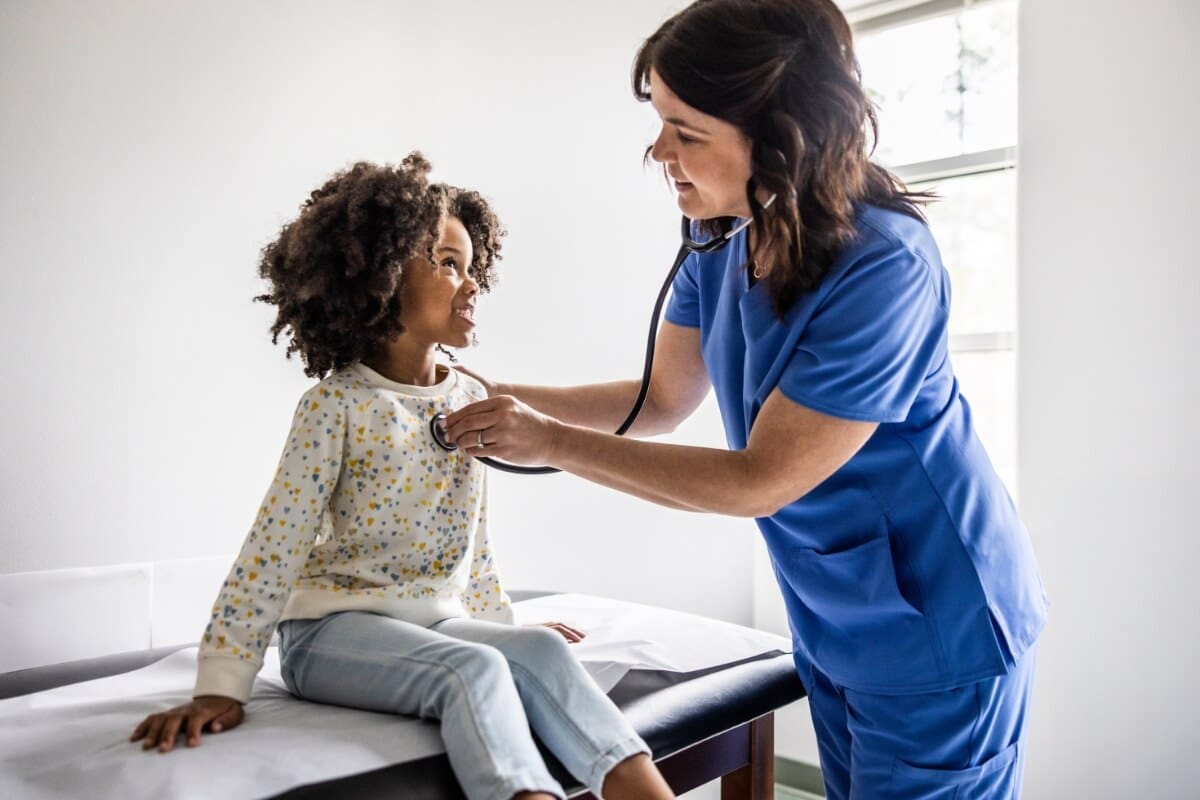
If you have diabetes, it’s important to monitor your blood sugar at different times of the day and throughout the year. There are 3 tools that can help you do this and, therefore, manage your diabetes: A blood test done every three months, blood tests taken every day, and a system that constantly monitors your blood glucose.
The 3-month blood test is called an A1C test. This test reflects your blood sugar (or blood glucose) control over the past 2-3 months. Testing your A1C level every 3 months is the best way for you and your doctor to understand how well your blood sugar levels are controlled. Your doctor will likely be the one who orders an A1C test. However, you can also purchase over-the-counter A1C testing kits that you can use at home. Your A1C goal will be determined by your doctor. However, the goal is generally less than 7% or 8%, depending on your age.
The daily blood test is done with a blood glucose monitor (BGM). This is also called a home blood sugar meter, a glucometer, or a glucose meter. This type of testing is often referred to as self-monitoring of blood glucose. Your doctor may prescribe a BGM, especially if your blood sugar fluctuates. They will show you how to use it.
A BGM measures the amount of glucose in a drop of blood at that particular time. This tried-and-true test is performed by getting a sample of your blood, usually from your finger. This process is called a fingerstick. The blood from your finger is put onto a test strip and read by the monitor. Fingersticks need to be done several times a day, and sometimes at night, to get an accurate look at your glucose levels. Regular testing through the day can help you improve control of your blood sugar levels. The results you get from fingersticks show if your blood glucose is within the range set by your doctor. You can use these results to make appropriate adjustments to your diet, activity, insulin, or the dosages of other medicines. In many cases, the results from BGMs can be uploaded to a computer to generate reports.
The third type of monitoring is with a continuous glucose monitoring system (CGM). This product allows people with diabetes to measure their blood glucose around the clock, updating the glucose level every 1 to 15 minutes, depending on the CGM brand. It also tells you which direction your glucose is headed, unlike a BGM. CGMs involve an easy-to-insert, small sensor you wear for up to 14 days, depending on the brand The sensor has an adhesive that helps it stick to your skin. The CGM also includes a transmitter. This can be a separate device or it may be built into the sensor. Some CGMs last longer than 14 days but they must be placed under your skin by your doctor. CGMs can eliminate the need for fingersticks.
A CGM also comes with a receiver or reader. This allows your computer or smartphone to receive the data from the transmitter. The data provides detailed insights and trends on your blood glucose throughout the day. Based on that, it can predict dangerous highs and lows before they happen. This can help you make quick, day-to-day adjustments to stay in your targeted area. Some adjustments include changes to your eating habits and exercise level. Additionally, this data can help you and your doctor make decisions about your diabetes management. If you choose, the data can be shared with someone you trust.
Path to improved health
What supplies do I need?
For a BGM, you’ll need a glucose meter, alcohol pads, sterile finger lancets (small needles), and sterile test strips. A CGM comes as a complete set, including a sensor, a transmitter, and a receiver or reader.
How do I pick a glucose meter?
Your doctor will make a recommendation. Check with your health insurance plan to see if it will pay for your BGM, its supplies, or a CGM. If so, your plan may only pay for a certain meter.
Shop around and compare costs. Consider what features are important to you. For example, some meters are made for people who have poor eyesight. If you want to pay a little more money, you can get a BGM that stores the results in its memory. This allows you to compare results from several days at one time.
How do I measure my blood sugar level?
Follow your doctor’s advice and the instructions that come with the BGM or CGM. Different meters work differently, so be sure to check with your doctor for advice specifically for you. With a BGM, you’ll usually follow the steps below:
- Wash your hands and dry them well before doing the test.
- Use an alcohol pad to clean the area that you’re going to prick. For most glucose meters, you will prick your fingertip. However, with some meters, you can also use your forearm, thigh, or the fleshy part of your hand. Ask your doctor what area you should use with your meter.
- Prick yourself with a sterile lancet to get a drop of blood. (If you prick your fingertip, it may be easier and less painful to prick it on one side, not on the pad.)
- Place the drop of blood on the test strip.
- Follow the instructions for inserting the test strip into your glucose meter.
- The meter will give you a number for your blood sugar level.
If you have a CGM, you’ll follow the insertion directions that come with the monitor. Once it’s warmed up, the transmitter wirelessly sends the data to your computer or smartphone.
What if I can’t get a drop of blood for a fingerstick?
If you want to get blood from your fingertip, try washing your hands in hot water to get the blood flowing. Then dangle your hand below your heart for a minute. Prick your finger quickly and then put your hand back down below your heart. You might also try slowly squeezing the finger from the base to the tip.
How often should I test my blood sugar level?
Your family doctor will recommend how often you should test. Testing times are based on the kind of medicine you take and on how well your blood sugar levels are controlled. You’ll probably need to check your blood sugar more often at first. You’ll also check it more often when you feel sick or stressed, when you change your medicine, or if you’re pregnant.
What do I do with the results?
You need to keep track of your results. There are a few ways you can do this. You can write them down in a record book. Use a small notebook or ask your doctor for a blood testing record book. Depending on the type of monitor you have, you may be able to keep track of the results on your computer or smartphone. Whatever method you use, you may also want to keep track of what you have eaten, when you took medicine or insulin, and how active you’ve been during the day. This will help you see how these things affect your blood sugar. Talk with your doctor about what is a good range for your blood sugar level and what to do if your blood sugar is not within that range.
Check your blood sugar if:
- You have symptoms of low blood sugar (hypoglycemia). This includes dizziness, shaking, sweating, chills, and confusion.
- You have symptoms of high blood sugar (hyperglycemia), which include sleepiness, blurry vision, frequent urination, and excessive thirst.
- You have a job in which poor blood sugar control could cause safety problems.
- You need help deciding if it’s safe to drive or perform other tasks that require concentration if you are taking insulin or have had hypoglycemia in the past.
You need to learn how meals, physical activity, and medicine affect your blood sugar level.
When should I check my blood sugar more frequently?
- If your diabetes medicine changes
- If you begin taking other kinds of medicines
- If you change your diet
- If your exercise routine or activity level changes
- If your stress level increases
- If you’re sick. When you are sick, even without eating, your sugar levels may run high, so testing is important.
Follow your doctor’s testing recommendations during this time. Continue testing more often until you have maintained your blood sugar goal values for at least 1 week. Or continue testing until your doctor advises you that more frequent testing is no longer necessary.
Tips on blood sugar testing
For BGMs, you should:
- Pay attention to expiration dates for test strips.
- Use a big enough drop of blood.
- Check the batteries of your meter.
- Be sure your meter is set correctly.
- Keep your meter clean.
For BGMs and CGMs:
- Follow the instructions for the test carefully.
- Write down the results and show them to your doctor.
What time of day should I test?
Recommendations for the best time of day to test your blood sugar depend on your medicine, mealtimes, and blood sugar control. Your doctor may provide a chart that outlines when to check your blood sugar and what level you should target. Your doctor may also suggest different goals, depending on your situation.
The chart may look something like this:
| Time to Test | Fasting, Before Breakfast | 1-2 Hours After Breakfast | Before Lunch | 1-2 Hours After Lunch | Before Dinner | 1-2 Hours After Dinner | Bedtime | 3 a.m. |
| Target Goal Ranges* | 80-120 | < 180 | 80-120 | < 180 | 80-120 | < 180 | 100-140 | 70-110 |
| Doctor’s Recommendation | ||||||||
| Monday | ||||||||
| Tuesday | ||||||||
| Wednesday | ||||||||
| Thursday | ||||||||
| Friday | ||||||||
| Saturday | ||||||||
| Sunday | ||||||||
| * Blood glucose values are measured and taken from your glucose monitor. The target goals are based on recommendations from a panel of medical experts. Talk to your doctor about what changes to make if your blood sugar levels are not within the range. | ||||||||
What do my blood sugar levels tell me?
| Time of Test | Can Be Used to … |
| Fasting blood sugar (FBG) nighttime (3-4 a.m.) | Adjust medicine or long-acting insulin |
| Before a meal | Modify meal or medicine |
| 1-2 hours after a meal | Learn how food affects sugar values (often the highest blood sugars of the day*) |
| At bedtime | Adjust diet or medicine (last chance for the next 8 hours) |
*Depends on the size of the meal and the amount of insulin in your medicine
Things to consider
Managing your blood sugar level is critical to your overall health. Often the focus is on keeping blood sugar levels low. But if they are too low, it can put you at risk, too.
Hypoglycemia is the name for a condition in which the level of sugar in your blood is too low. Your blood sugar level can get too low if you exercise more than usual or if you don’t eat enough. It also can get too low if you don’t eat on time or if you take too much insulin. Signs of hypoglycemia include:
- Feeling very tired
- Yawning frequently
- Being unable to speak or think clearly
- Losing muscle coordination
- Sweating
- Twitching
- Having a seizure
- Suddenly feeling like you’re going to pass out
- Becoming very pale
- Losing consciousness
How can I deal with low blood sugar?
People who have diabetes should carry at least 15 grams of a fast-acting carbohydrate with them at all times in case of hypoglycemia or an insulin reaction. The following are examples of quick sources of energy that can relieve the symptoms of low blood sugar:
- Glucose tablets: 3 tablets (5 grams each)
- Regular soda (not diet): ½ to ¾ cup
- Fruit juice: ½ cup
- Honey: 1 tablespoon
- Candy: 5 Lifesavers, 1 cellophane sleeve of Smarties, or 10 Skittles
If you don’t feel better 15 minutes after having a fast-acting carbohydrate, or if monitoring shows that your blood sugar level is still too low, have another 15 grams of a fast-acting carbohydrate.
Teach your friends, work colleagues, and family members how to treat hypoglycemia, because sometimes you may need their help. Also, keep a supply of glucagon on hand. Glucagon comes in a kit with a powder and a liquid that you must mix together and then inject. It will raise your blood sugar level. If you are unconscious, or you can’t eat or drink, another person can give you a shot of glucagon. Talk to your doctor to learn when and how to use glucagon.
If you use a CGM, remember it collects data across many days. Even during the day, the data you see is from a few minutes earlier. Because of that, it’s not the best choice for showing you what your blood sugar is at a particular time. Sometimes you should use a fingerstick for an accurate, timely reading. These instances include when you’re exercising and after you’ve taken insulin to correct a high glucose reading. Fingersticks also can be a good backup for your CGM. Use them when your CGM sensor is warming up and when the sensor shows readings that are high or low. Also use them if you have symptoms of high or low blood glucose or if you suspect your CGM isn’t working correctly.
My CGM: Helpful Videos for Patients
Patient Experience with CGM: This video introduces Mila, Hangry Woman Founder, and diabetes patient as she shares her experience with using a CGM for the last four years.
FAQ and Demo: This video addresses questions that patients frequently have when first learning about CGM and Mila demonstrates how she applies her CGM.
Understanding Your CGM Data: This video walks through the data that a patient sees with their CGM reader or smartphone and provides basic information about what that data means.
Patient videos supported by an educational grant to the AAFP from Abbott Diabetes Care.
Questions to ask your doctor
- How often should I monitor my blood sugar level?
- What type of device should I use to check my blood sugar level?
- Do I need to take medicine to lower my blood sugar?
- Can you show me how to use a glucose meter?
- Do I need to track my daily results?
Resources
Endocrine Society and Hormone Health Network Publication: Continuous Glucose Monitoring
National Institutes of Health, MedlinePlus: Monitoring Blood Glucose
![]()
Copyright © American Academy of Family Physicians
This information provides a general overview and may not apply to everyone. Talk to your family doctor to find out if this information applies to you and to get more information on this subject.











